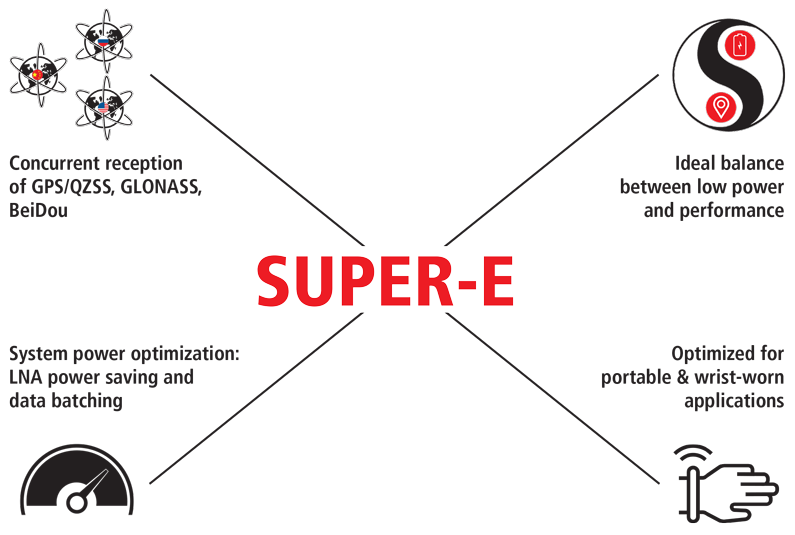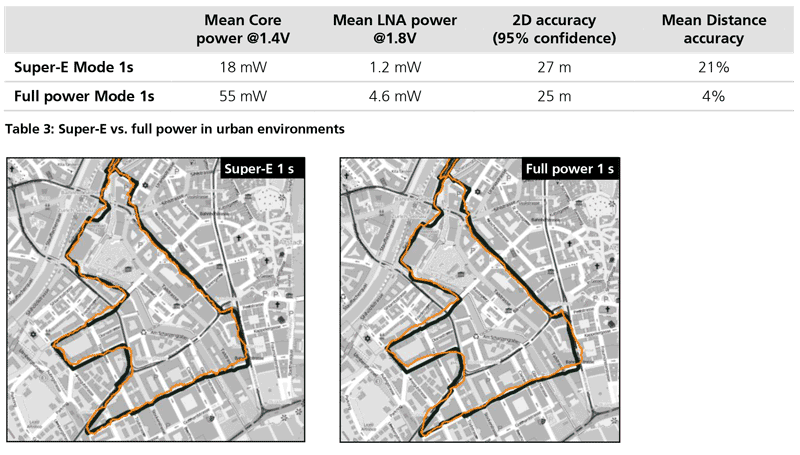
- Support portal
- Evaluation Kits and partner products
u-blox Support
- Product documentation
Documentation
- Investor relations
Investor relations
Manufacturers of portable applications, such as smart wearable watches or trackers, have struggled to find the best balance between size and positioning performance in their products. The resulting products are not small enough and not accurate enough, which has led to a lower-than-expected adoption rate.

In response to this need, u-blox developed the Super-E positioning technology. Super-E, short for Super-Efficient, is an intelligent power mode that reduces overall power consumption without impacting positioning performance. It uses only the minimal resources required for tracking and maintaining an accurate position, as opposed to the full-power operation, which always tries to maximize positioning performance.
Only when the signals are very weak or very few satellites are visible, is the full-power scheme activated to maintain positioning performance.
Please see the White Paper: Super-E: Low power and good performance.
In a real-life sport watch scenario, Super-E achieved three times the power saving, while maintaining position and speed accuracy comparable to the traditional u-blox 1 Hz full power mode.
Super-E mode is incorporated in a System in Package (SiP) solution that only occupies 20 mm2 and features a complete GNSS system, including TCXO, LNA, SAW filter and filtering elements for easy design-in into any highly integrated product. Also available in a chip, the Super-E mode combines low power consumption with high positioning accuracy in a design footprint of less than 30 mm2 (including all necessary components for a portable design).
Highlights:
 |
|
|
|
 |
Targeted applications

Their solutions integrate many features (e.g. heart rate) within the same low power budget
while using small batteries to make the product smaller.
This is crucial to reach a broader market and audiences that prefer slimmer designs.

When a device goes beyond the geofence, a location update every few minutes is not enough to accurately locate the tracker.
The operator must then keep the system on, which rapidly depletes the battery.
For emergency situations, it is important to have the longest battery life.

With high penetration in the mass market in recent years, these devices are simple,
low cost and slim.
Fitness trackers need GNSS to accurately track workouts in real-time.
However, they must stay at the same price point and still look slim to remain attractive.

This is highly inefficient as it requires other smartphone owners to have the required application
installed on their phone to find the lost asset when passing by. Adding GNSS (+connectivity)
as an “emergency” option for when the device is lost would give peace of mind to its owner.
It is very important that the device remains small (with a small battery) for its adoption and implementation in objects (e.g. keys, wallet, and bike).
